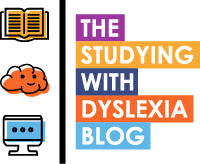There are so many reasons why reading can be hard for so many pupils, students and adults. I include myself. So with such a wealth of tech available that helps with reading, why isn’t it more widely embraced?
Welcome Julia Clouter!
Experienced SENCo and Head of Education at Scanning Pens, Julia Clouter is delivering a workshop at the SEN Jigsaw Conference in June 2020 called “Transition Support For Literacy. A Passport For SEN Learners.”
I was keen to get her to share an article on The Studying With Dyslexia Blog as she is so passionate about supporting the needs of SEN learners and so she wrote the following:
A Jigsaw of Needs Supported with Assistive Technology.
The ability to engage with reading is essential. Reading-progress expectations start at entry to school and the finishing line keeps moving. This is because the goal that represents being a successful reader is linked to age. Reading Age (RA) scores inform teachers what resources should be presented and what learning materials are appropriate for the class. RA scores create a channel of books that are suggested for reading enjoyment. They also determine the level of complexity of language used for examination questions. The latest data from the DfE is telling us that 73% of learners are achieving their reading progress levels. This sounds good, and there is no doubt that the need to accelerate reading progress is on the agenda. The same data, however, is also telling us that 1 in 4 learners are struggling to access reading and learning resources that are being presented in the classroom.
This article is brought to you by Scanning Pens.
Literacy is at the heart of learning. When reading progress falters, the process of investigation and support should begin. In some schools, children’s reading gaps can grow to 12 months or more below their chronological age, before the need for intervention is identified and arranged. Talking about reading at home and monitoring reading habits and engagement will help reveal patterns that may be emerging. If you are already aware of reluctance and anxiety around reading, it is time to do a little bit of research and get pro-active about reading progress.
For parents who are tech savvy, and have a budget to invest in assistive technology, there are a range of tools and applications that appeal to reluctant readers. Text-to-speech tools would be at the top of my list along with audio books that support class readers. Reading and listening simultaneously triggers multimodal learning pathways. Combined strategies are more effective than learning with just one sense. Another tool that you may want to investigate, is a ReaderPen.
The ReaderPen is a totally portable, stand-alone, pocket-size device that can be used discreetly with headphones. This tool is a word scanner that scans text then plays it back aloud. It is a text-to-speech tool that can read printed materials like books and school worksheets. It will read single words, sentences or paragraphs. As it speaks the words, it highlights the text on its screen and provides the multimodal learning experience. For learners who are keen to read but can’t access text, the ReaderPen enables independent learning, and allows access to the same reading books and resources as the learner’s peers.
In the classroom, a ReaderPen can help children with word definitions because it contains two important dictionaries for class based work. These dictionaries are The Collins and The Oxford Primary dictionary. By using this function, struggling to search for words and meanings is eliminated and understanding is secured immediately. This is a great tool for dyslexic learners who are often just looking for clarification because they already know the word. For SpLD learners it takes the stress out of reading.
The ReaderPen can help improve access to reading for learners who may have a wide range of additional learning difficulties. For example, learners who struggle with speech sounds, or are working towards improved language development. Being able to listen to words, repeated and pronounced consistently aids embedding. Learners with attention difficulties benefit from the focus that a ReaderPen gives. This is because plugging in headphones and the process of scanning draws the learner into a distraction free sate of concentration. Learners who struggle with self-esteem or who lack confidence are able to check understanding and benefit from the validation it gives. For those who are learning with Autistic Spectrum challenges, independently working with technology is often preferable to working with human support. The ReaderPen remains consistent and does not require interaction. Another example is English as Additional Language learners, who can use a ReaderPen to continue the important work of immersive language exposure with well pronounced words that give clarity of diction in addition to definition.
The ReaderPen is a very usable tool that stands alone, so it can be taken anywhere. It can be charged using a standard USB connector and, following a two-hour charge, will give up to eight hours of continuous use. It is comfortable to hold, easy to grip and once mastered, becomes the tool that provides essential support and allows independent learning with confidence. If you would like to find out more about the ReaderPen, you can get in touch with Jim Bowen, jim@scanningpens.com.




